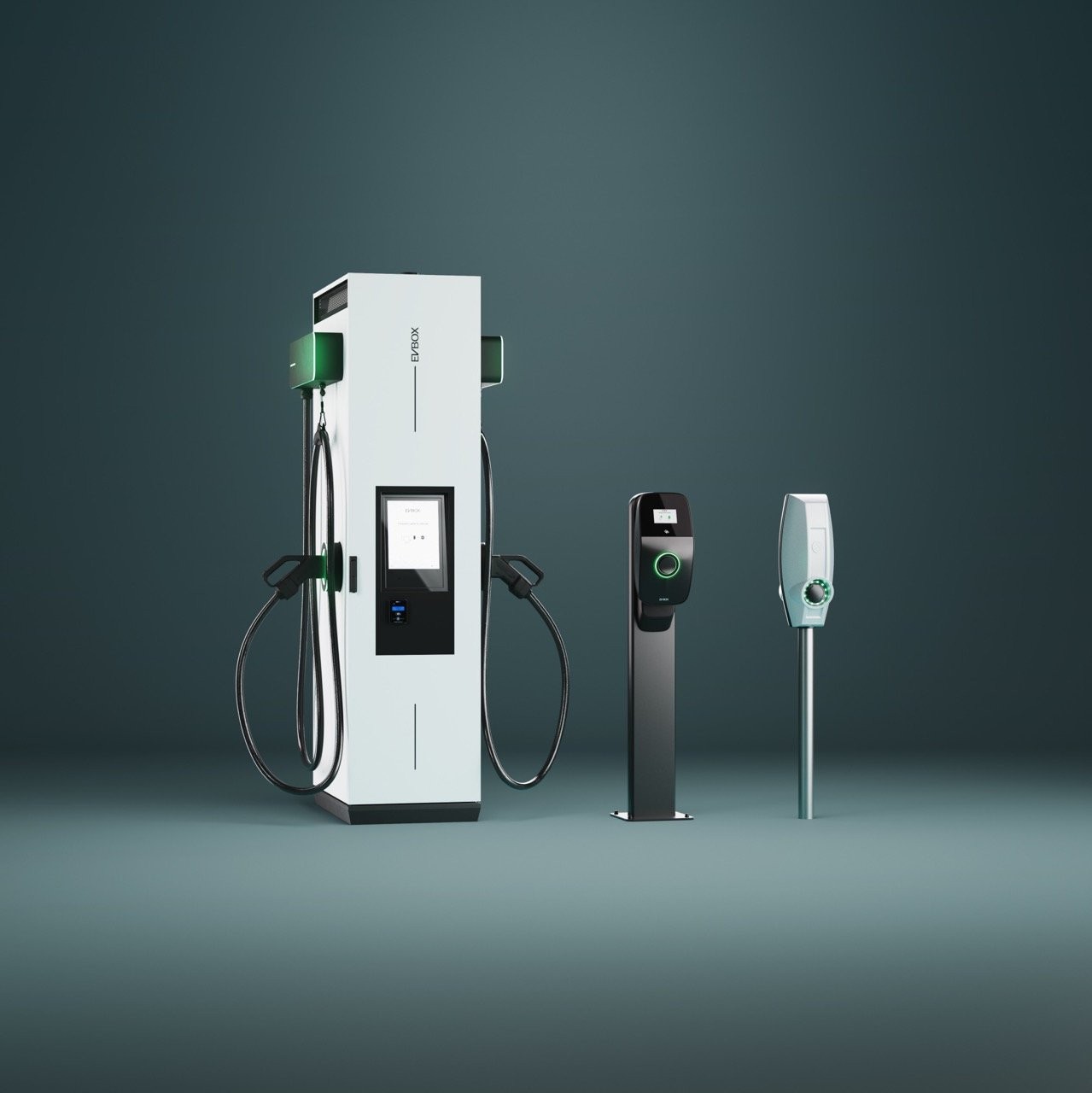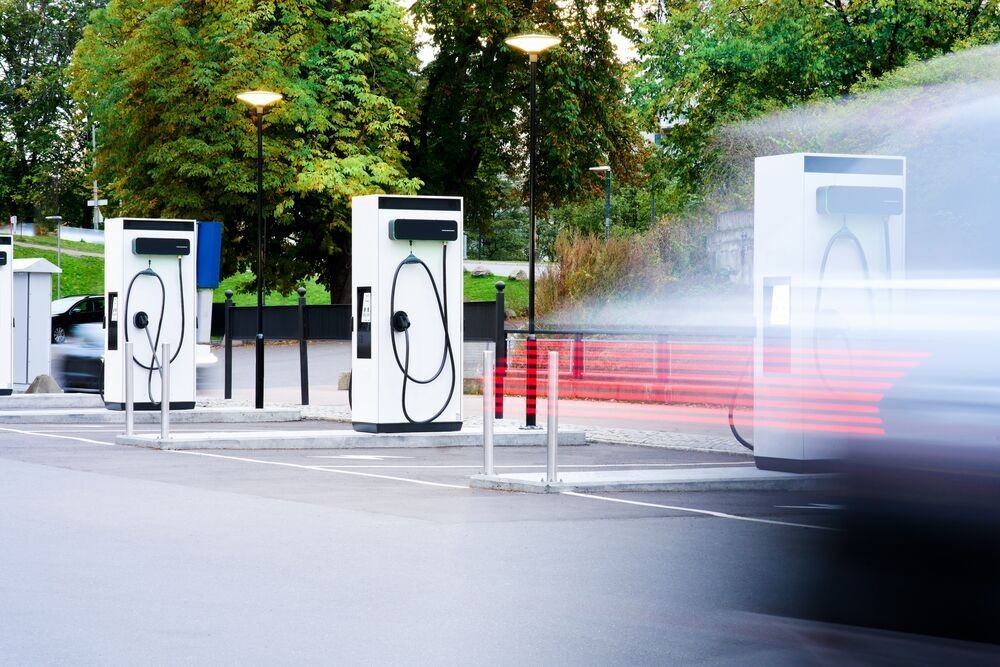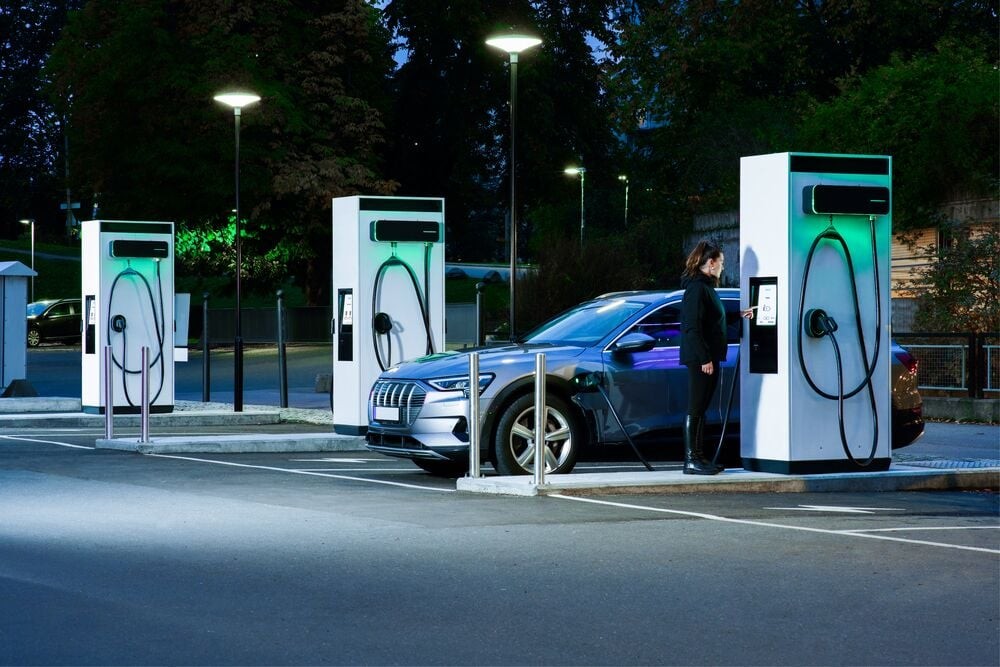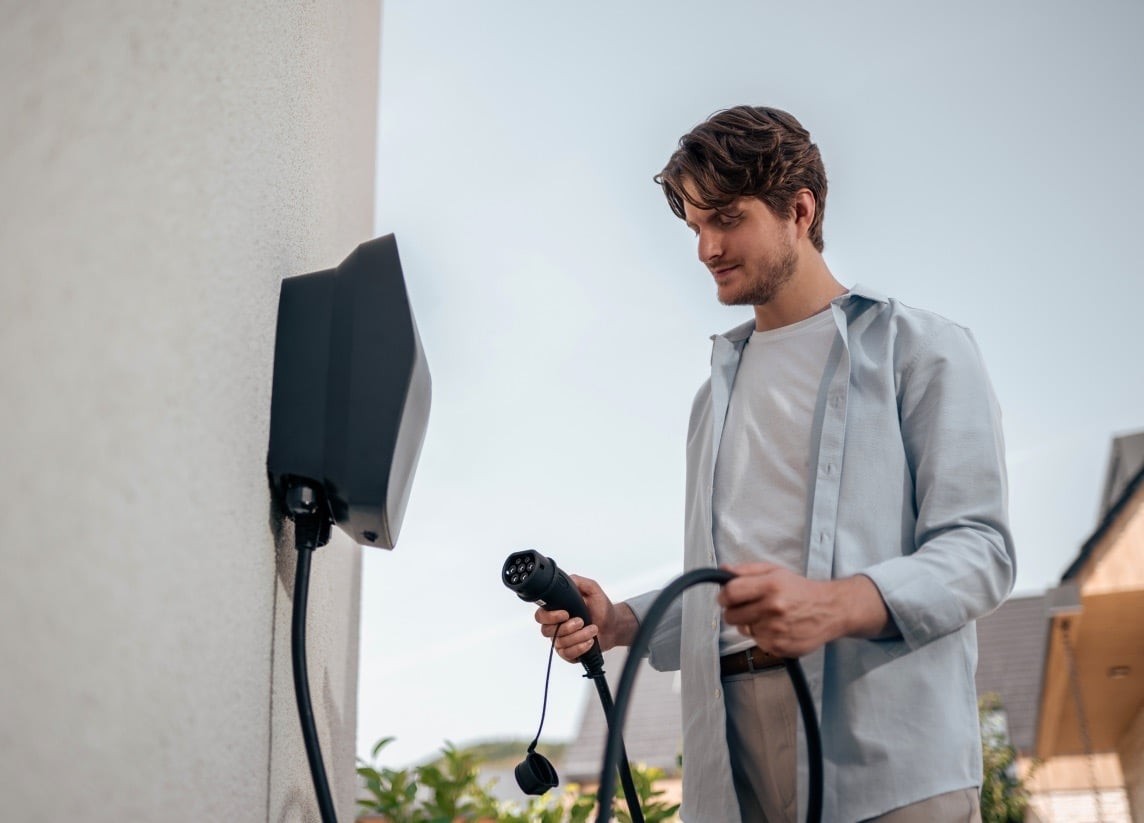Electric vehicles (EVs) are rapidly gaining popularity, and as they do, the demand for efficient charging solutions grows. Understanding the different levels of EV charging is crucial for every EV owner and potential buyer. Among these, Level 3 Electric Car Chargers, also known as DC fast chargers, stand out as the quickest way to power up your EV. This guide will delve into everything you need to know about level 3 charging, making you an expert in no time.
Understanding the Levels: Level 1, Level 2, and Level 3 Charging
When it comes to charging your electric vehicle, you’ll encounter three primary levels: Level 1, Level 2, and Level 3. These levels are differentiated by their power output, which directly impacts charging speed. The higher the level, the more power delivered, and consequently, the faster your EV charges. Let’s break down each level to understand where level 3 electric car chargers fit in.
Level 1 Charging: The Slowest Pace
Level 1 charging is the most basic and slowest method. It utilizes a standard household outlet, plugging your EV directly into a regular wall socket. This method typically delivers between 1.3 kW and 2.4 kW of power. Level 1 charging is often used for overnight charging at home, adding only about 3 to 5 miles of range per hour. It’s generally considered the least convenient option for most EV owners who need to charge quickly.
Level 2 Charging: Stepping Up the Speed
Level 2 charging is a significant step up in speed compared to Level 1. Level 2 electric car chargers require a 240V outlet (similar to what a dryer or oven uses) and can deliver between 7.4 kW and 22 kW of power. These chargers are commonly found in homes, workplaces, and public parking areas. A Level 2 charger can add approximately 25 to 75 miles of range per hour, making it much more practical for daily charging needs.
Level 3 Charging: The Fast Lane – DC Fast Charging
Level 3 electric car chargers, the focus of this guide, are the champions of speed in the EV charging world. Also known as DC fast chargers (DCFC), they offer power outputs ranging from 50 kW to as high as 400 kW. This rapid power delivery can add 100 to 200 miles of range in just 30 minutes, and in some cases even faster, depending on the vehicle and charger capabilities. Level 3 electric car chargers are primarily designed for public charging stations along highways, at commercial locations, and in urban centers where quick charging is essential.
 A visual comparison of different EV charging stations, showcasing EVBox Troniq Modular (Level 3), EVBox Livo (Level 2), and EVBox BusinessLine (Level 2), highlighting the range of charging solutions available.
A visual comparison of different EV charging stations, showcasing EVBox Troniq Modular (Level 3), EVBox Livo (Level 2), and EVBox BusinessLine (Level 2), highlighting the range of charging solutions available.
Decoding the Terminology: Level 3, DC Fast Charging, Rapid Charging, and More
The world of EV charging is still evolving, and with it comes a variety of terms that can sometimes be confusing. You might hear level 3 electric car chargers referred to as DC fast charging, rapid charging, ultra-fast charging, or even quick charging. Rest assured, these terms largely describe the same thing: the fastest public charging option available for electric vehicles.
The key differentiator of level 3 electric car chargers is their use of Direct Current (DC). Unlike Level 1 and Level 2 chargers that use Alternating Current (AC) and rely on the vehicle’s onboard charger to convert AC to DC, Level 3 chargers perform this conversion within the charging station itself. This direct DC power delivery bypasses the limitations of the onboard charger, enabling much higher power flow and significantly faster charging times.
 A modern electric car swiftly departs from a charging station equipped with multiple EVBox Troniq Modular Level 3 chargers, illustrating the speed and efficiency of fast charging in a busy parking environment.
A modern electric car swiftly departs from a charging station equipped with multiple EVBox Troniq Modular Level 3 chargers, illustrating the speed and efficiency of fast charging in a busy parking environment.
How Level 3 Electric Car Chargers Work: The Technical Edge
To truly understand the speed of level 3 electric car chargers, it’s essential to grasp the fundamental difference in how they deliver power compared to Level 1 and Level 2. The electricity grid delivers power as Alternating Current (AC). However, EV batteries can only store and use Direct Current (DC).
With Level 1 and Level 2 charging, the AC power from the grid is fed into the electric vehicle. The vehicle then uses its onboard charger to convert this AC power into DC power, which is then used to charge the battery. This onboard conversion process limits the power that can be delivered to the battery, hence the slower charging speeds.
Level 3 electric car chargers take a different approach. They contain powerful rectifiers that convert the AC power from the grid to DC power before it even reaches the vehicle. The DC power is then directly fed into the EV battery, bypassing the onboard charger. This direct DC delivery allows for a much higher flow of electricity, resulting in significantly faster charging times. While the internal components of level 3 electric car chargers can vary, the core principle of external AC to DC conversion remains consistent across all models.
The Advantages of Level 3 Charging: Speed, Convenience, and Accessibility
The primary advantage of level 3 electric car chargers is, undoubtedly, speed. This rapid charging capability unlocks a range of benefits for EV drivers and the broader adoption of electric mobility:
- Ultra-Fast Charging Times: Reduce charging times from hours to minutes, making long journeys and quick top-ups practical.
- Convenience for Long Trips: Ideal for highway travel, enabling drivers to quickly recharge during road trips, minimizing downtime.
- Perfect for On-the-Go Charging: Suitable for urban environments where drivers need quick charging solutions while running errands or commuting.
- Commercial Applications: Essential for businesses like gas stations, convenience stores, and fleet operators (taxis, delivery vehicles) to offer fast charging services.
- Combating Range Anxiety: The increasing availability of level 3 electric car chargers helps alleviate range anxiety, a major concern for potential EV buyers.
 A couple is enjoying coffee at an outdoor table while their electric car is charging at an EVBox Troniq Modular Level 3 charging station, highlighting the convenience and lifestyle integration of fast charging during breaks.
A couple is enjoying coffee at an outdoor table while their electric car is charging at an EVBox Troniq Modular Level 3 charging station, highlighting the convenience and lifestyle integration of fast charging during breaks.
The Cost Factor: Is Level 3 Charging More Expensive?
Yes, level 3 electric car charging is generally more expensive than Level 1 or Level 2 charging. This higher cost is attributed to several factors:
- Infrastructure Investment: Level 3 electric car chargers are significantly more complex and expensive to install and maintain than Level 1 or Level 2 chargers. Charge point operators need to recoup this investment.
- Power Demand: The high power output of level 3 electric car chargers results in higher electricity consumption and demand charges for the charging station operator.
- Convenience Premium: You are paying for the speed and convenience of rapid charging.
The exact cost of level 3 electric car charging varies depending on location, charging provider, and billing method. Charging can be billed per kilowatt-hour (kWh), per minute, or a combination of both. Some providers also offer membership plans that can reduce charging costs. It’s always advisable to check the pricing structure of a charging station before you plug in.
 A woman is using a payment terminal at a Level 3 EV charging station, indicating the payment process for accessing fast charging services.
A woman is using a payment terminal at a Level 3 EV charging station, indicating the payment process for accessing fast charging services.
To optimize your charging costs, consider your vehicle’s maximum DC charging capacity. If your EV has a lower maximum charging rate (e.g., 50 kW), using an ultra-fast level 3 electric car charger (e.g., 350 kW) might not provide faster charging and could result in paying more per minute without gaining extra speed. Understanding your car’s charging capabilities and choosing the appropriate charger can help you balance cost and convenience.
EV Compatibility: Can My EV Use a Level 3 Charger?
The good news is that most modern electric vehicles are compatible with level 3 electric car chargers. However, the maximum charging power that your EV can accept varies depending on the battery and vehicle design. While some EVs can handle up to 350 kW, others may be limited to 50 kW or 150 kW.
Vehicles with smaller batteries or older models might not be equipped for level 3 electric car charging. Tesla vehicles, while having their proprietary Supercharger network (which is also Level 3), can also utilize public level 3 electric car chargers with the appropriate adapter for certain models.
To determine your EV’s compatibility and maximum charging rate, consult your vehicle’s manual or the manufacturer’s website. Resources are also available online that list EV models and their charging specifications, ensuring you can make informed decisions when using level 3 electric car chargers.
Level 3 Chargers at Home: A Practicality Check
While the idea of having ultra-fast charging at home might be appealing, installing a level 3 electric car charger at home is generally not feasible for residential use. The reasons are primarily due to:
- High Power Requirements: Level 3 electric car chargers require extremely high-power electrical connections, often industrial-grade, far exceeding typical household electrical capacity.
- Cost and Complexity: The cost of purchasing and installing a level 3 electric car charger is significantly higher than Level 1 or Level 2 chargers, making it impractical for most homeowners.
- Utility Infrastructure: Residential electrical grids are typically not designed to handle the sustained high power demands of level 3 electric car chargers.
Level 2 chargers are the most powerful and practical option for home EV charging, offering a balance of speed and feasibility for residential electrical systems. Level 3 electric car chargers are best suited for public and commercial settings where high-power infrastructure is available and rapid charging is a priority.
 A man is using his EVBox Livo Level 2 home charging station, demonstrating the ease and convenience of Level 2 charging for everyday home use.
A man is using his EVBox Livo Level 2 home charging station, demonstrating the ease and convenience of Level 2 charging for everyday home use.
Level 3 Charging: Driving the Future of Electric Mobility
Level 3 electric car chargers are playing a pivotal role in accelerating the adoption of electric vehicles. As EV technology advances and battery ranges improve, the demand for convenient and fast charging infrastructure becomes even more critical. Level 3 electric car chargers address the need for rapid refueling, making EVs a more practical and appealing option for a wider range of drivers.
The expansion of level 3 electric car charging networks is essential for overcoming range anxiety and building confidence in electric mobility. As these fast chargers become more readily available and accessible, they pave the way for a future where electric vehicles are not just a niche market but the dominant mode of transportation. Continued investment and innovation in level 3 electric car charger technology will be key to realizing the full potential of electric mobility and creating a sustainable transportation ecosystem.